
views
Preparing to Make Raw Cat Food
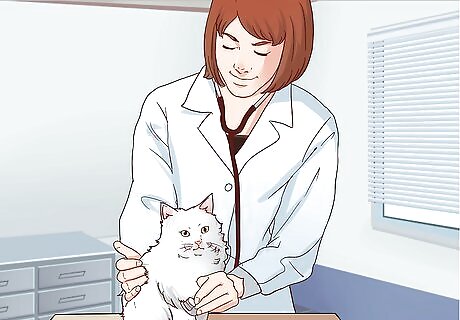
Get your cat examined. Your cat should be completely healthy before you begin feeding her a homemade diet. Take your cat to the veterinarian for a thorough examination. You should also show the diet and recipes to a certified animal nutritionist to make sure they provide all the nutrients your cat needs. The veterinarian can help you locate a certified animal nutritionist in your area or you can find one online.
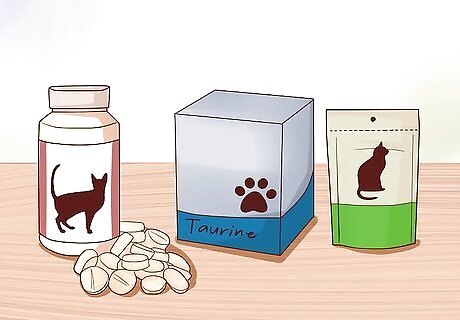
Be prepared to supplement. When you grind and freeze raw cat food, this reduces the amount of taurine available to the cat. You'll need to supplement this amino acid to prevent major eye and cardiac problems. Recognize that a taurine deficiency doesn't show up immediately. Instead, it will take a few years, but by then the damage may be irreversible. Ask the animal nutrition expert to recommend a specific dosage for your cat.

Practice safe food handling. Any time you handle raw food, you need to wash your hands frequently and safely store the meat. This is important to prevent salmonella poisoning. Always use fresh meat, never meat that looks like it's starting to go bad. This can increase the risk of disease. Handling raw meat when pregnant can increase your risk for toxoplasmosis, a parasitic disease. Wash your hands frequently or wear gloves when handling meat. If you're concerned about the nutrition of a raw diet, understand that no nutrients are lost by preparing raw food rather than cooking it for your pet.
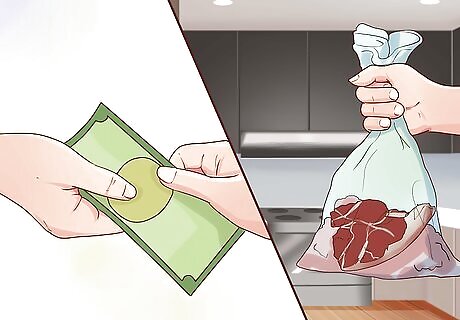
Purchase the meat. Depending on what meat you choose to use, you may have a hard time finding high-quality meat. While it might be easy to buy a whole chicken from your grocery store, you may need to seek out a local farmer or butcher to get organ meat. If you can only find whole chicken to use, only grind up and offer bones that are small. However, if you include bones that are too large, your cat will simply avoid them. Just make sure not to cook the bones, which can cause them to splinter and damage your cat's digestive system. Fortunately, pre-made mixes of ground raw meat are increasingly available in refrigerated and frozen sections of pet stores. All you need to do is thaw and add supplements to the meat.
Assembling Raw Cat Food
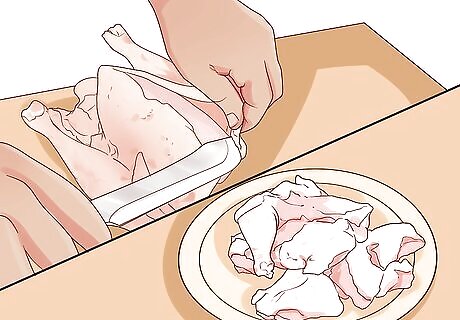
Prepare the meat. Cut up the carcass and separate the muscle meat. Cut the muscle meat into chunks or process it through a meat grinder using the extra-large grinding plate. Leaving chunks of meat can give your cat something to chew on and gives good tooth and gum exercise. Set the meaty bones aside. Place the prepared muscle meat in the refrigerator. If using chicken, remove as much skin as possible. Chicken necks are a good choice to use since they're mostly cartilage, are easy to chop, and are easy for the cat to digest. You can also use rabbit or dark meat from a chicken or turkey.
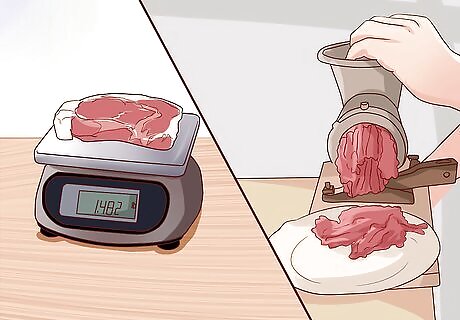
Process the organ meats. Once you've prepared the muscle meat, use a scale to weigh out the organ meats. Grind these through a meat grinder or food processor and set them in the refrigerator while you prepare the remaining ingredients. At this point, you can also take the meaty bones out of the refrigerator and pass them through a grinder. Avoid using a food processor to grind the bones, since it's probably not equipped to handle them.

Whisk together a supplement slurry. In a separate bowl, whisk the salmon oil, glandular supplement, kelp, dulse, vitamin E, vitamin B complex, egg yolks, and water until it's combined. If you're using the psyllium, add it last and stir again. You can discard or store the egg whites for another use.
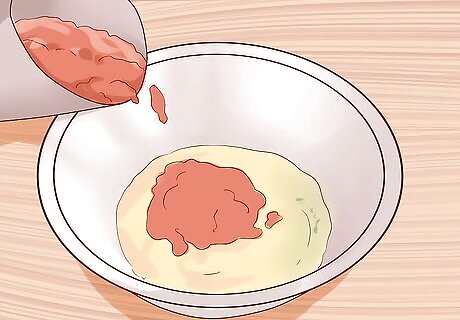
Combine the meats and supplement mixture. In a large bowl, combine the hand-chunked muscle meat with the ground meat and ground bones until completely mixed. Add the supplement slurry and stir again until it's evenly distributed.
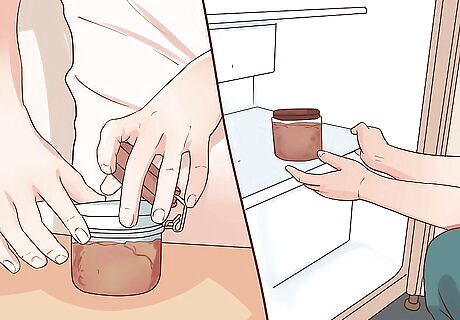
Package and store the food. Spoon the finished cat food into manageable containers such as freezer bags or one-cup plastic freezer containers. Avoid overfilling the containers. Instead, leave at least ⁄2 inch (1.3 cm) gap or headspace at the top. This will allow the food to expand as it freezes. Label the containers with the type of meat and the date before freezing. Wide-mouth mason glass jars can keep the food fresh for longer, but be sure to buy jars specifically made for freezing, not just canning.
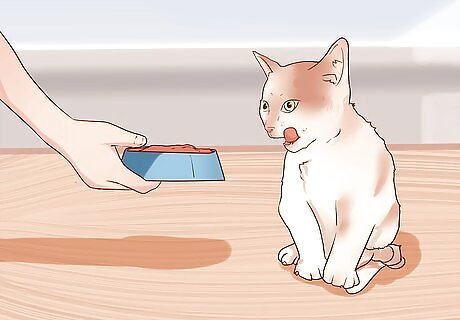
Serve the food to your cat. Remove the food from the freezer during mealtime and warm the food in a baggie. If you have some of the food in the refrigerator, you'll still need to warm it up before serving it. Some cats will vomit raw food if it’s cold when it hits the stomach. To warm the baggies, simply run them under hot water until warm to room temperature or just above. Never use the microwave to warm the food, especially if you've used bones. Cooked bones splinter and can be very dangerous to a cat, but raw bones are soft and easily digested by a cat.












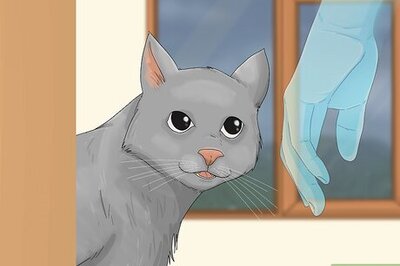





Comments
0 comment